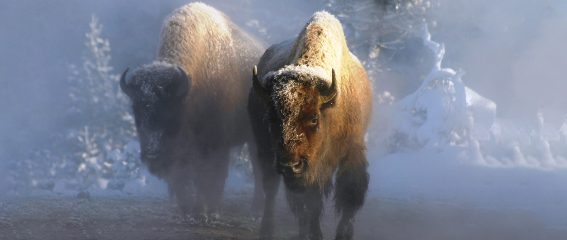The Yukon Bison: A Conservation Triumph and Ongoing Challenge

In the pristine wilderness of Yukon, Canada, a remarkable conservation story unfolds—one that involves the majestic Yukon Bison. These iconic creatures, once on the brink of extinction, now symbolize resilience and the power of conservation efforts. In this article, we will delve into the fascinating world of Yukon Bison, exploring why they were endangered, the efforts to save them, and the current state of their population. Let’s embark on a journey to discover the story of the Yukon Bison and why it’s crucial to protect these magnificent animals.
The History of Yukon Bison
The story of the Yukon Bison begins with the historical presence of these magnificent creatures in the region. Bison, also known as buffalo, once roamed the vast expanses of North America, including Yukon. They were a vital part of the ecosystem, playing a crucial role in shaping the landscape and providing sustenance for indigenous communities.
Key Milestones in Yukon Bison History
- 19th Century: Bison populations decline due to excessive hunting and habitat loss.
- Near Extinction: By the late 19th century, Yukon Bison populations are reduced to a mere handful.
- 1980s Reintroduction: A national reintroduction program is launched to reestablish Yukon Bison in their native habitat.
- Controversy: Lack of consultation with First Nations communities leads to debates over the reintroduction program’s management.
However, by the late 19th century, excessive hunting, habitat loss, and disease decimated bison populations across North America, including Yukon. The once-thriving herds dwindled to a mere handful of individuals, pushing these majestic animals to the brink of extinction.
A Controversial Reintroduction
The 1980s marked a turning point in the history of Yukon Bison. A national reintroduction program was initiated, aiming to reestablish a population of these magnificent creatures in their native habitat. The program aimed to bring back Yukon Bison to their historical range, but it was not without controversy.
One of the contentious aspects of this initiative was the lack of consultation with First Nations communities. Indigenous people have a deep connection to the land and its wildlife, and their voices were not adequately considered in the planning and execution of the reintroduction program. This omission led to ongoing tensions and debates regarding the management of Yukon Bison.
Population Recovery and Challenges
Despite the controversies surrounding the reintroduction program, it achieved a level of success. Over 170 Yukon Bison were reintroduced into the wild during the 1980s, and their population gradually began to recover. Today, these magnificent creatures can once again be spotted in their natural habitat, a testament to the power of conservation efforts.
Ongoing Threats to Yukon Bison
However, the challenges for Yukon Bison are far from over. They continue to face threats such as habitat degradation, climate change, and conflicts with human activities. Moreover, the complex relationship between conservationists, government agencies, and First Nations communities adds another layer of complexity to their management.
Community Engagement and Conservation
One key aspect of addressing these challenges is fostering community engagement and collaboration. Working together with First Nations communities and local stakeholders is essential in finding sustainable solutions that ensure the coexistence of Yukon Bison and human activities.
Research and Monitoring
To effectively manage the Yukon Bison population, ongoing research and monitoring are crucial. This includes studying their behavior, habitat preferences, and health to make informed decisions about their conservation.
Yukon Bison: A Symbol of Resilience
In conclusion, the story of the Yukon Bison is one of both triumph and ongoing challenges. These magnificent creatures, once pushed to the brink of extinction, have made a remarkable comeback, thanks to dedicated conservation efforts. However, their future remains uncertain, and their management is a delicate balancing act between conservation, cultural considerations, and environmental sustainability. As we reflect on the journey of the Yukon Bison, it serves as a reminder of the importance of preserving our natural heritage. These iconic animals are not just symbols of Yukon’s wilderness but also of the resilience of nature itself. The task ahead is clear—to protect and conserve the Yukon Bison, ensuring that future generations can continue to witness their grace and beauty in the wild.

